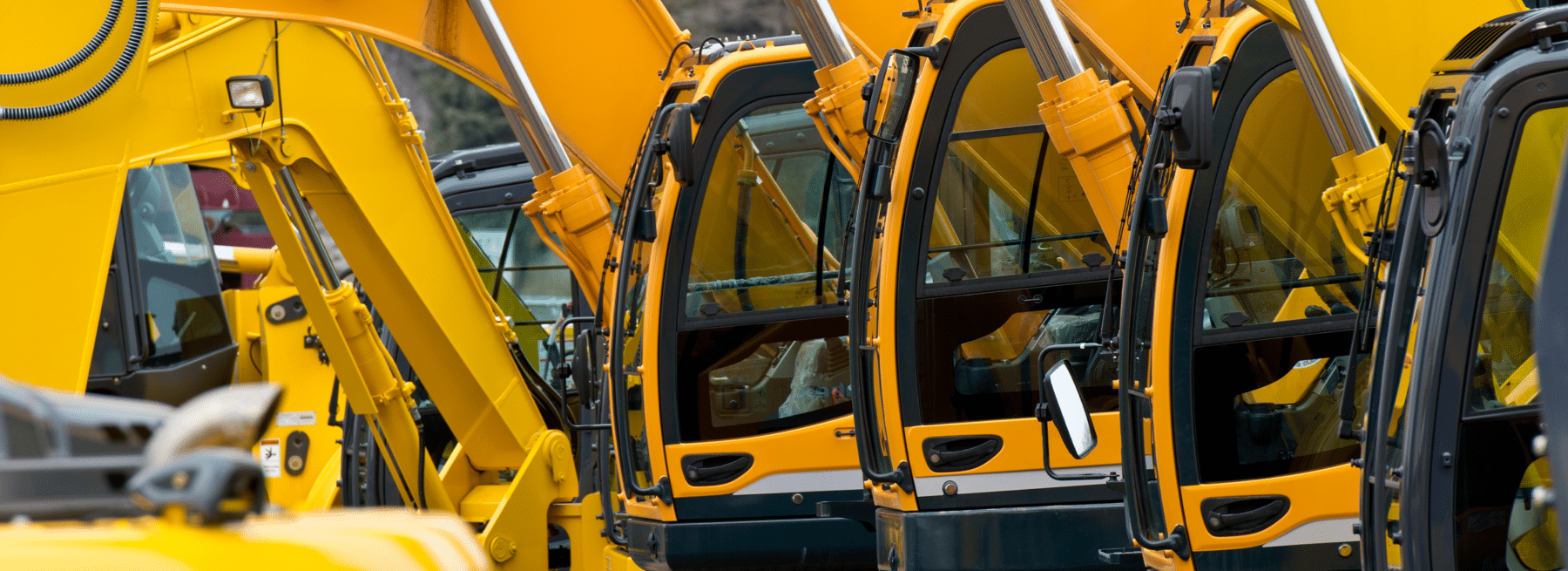Construction sites are bustling hubs of activity where many skilled workers come together to build structures and infrastructure. Accomplishing these impressive feats requires construction professionals to rely heavily on a diversity of heavy machinery and equipment. Construction rental equipment plays a crucial role in this industry, providing businesses with cost-effective access to the tools needed for projects of all sizes.
However, amidst the excitement of building something new, safety should never be compromised. That’s always a given. The importance of construction rental equipment safety can’t be overstated. Prioritizing safety in construction involves more than ensuring the safety of workers. It also requires the safety of construction rental equipment. In doing so, equipment can benefit in other ways including their longevity.
The Case for Construction Rental Equipment Safety
Yes, rental equipment safety affects compliance and requires ticking a box on a regulatory checklist. However, it is also an ethical and moral imperative. Safety is a company’s commitment to the well-being of the hardworking individuals who dedicate their skills and labor to building new structures and infrastructures.
Most importantly, the case for construction rental equipment safety is knowing that every construction worker, every operator, and every laborer, has a family behind them. They have parents, children, siblings, and friends who expect their safe return home after a day’s work. This is a shared responsibility that transcends the boundaries of job sites and corporate structures.
Construction rental equipment safety is an investment in the future of the industry. A robust safety culture attracts talent and cultivates trust. It’s an action that shows workers that their lives and health are valued. Doing this contributes to morale and job satisfaction. In a competitive industry with a labor shortage, safety can be the differentiator in attracting and retaining top talent.
Moreover, a strong safety track record can boost a company’s reputation. Clients and partners who know that safety is a goal and a commitment to quality and reliability will be drawn to companies that share this value. Thus, construction rental equipment safety is about more than helping prevent accidents. It’s about building a safer, more resilient, and more successful construction industry for everyone involved.
Here are the additional reasons it’s important to prioritize construction rental equipment safety.
Protect Lives
Without question, the most compelling reason for prioritizing safety in construction rental equipment is to protect the lives of the workers operating the machines. A construction site is an inherently hazardous setting. Any lapse in safety procedures can result in severe injuries or even fatalities. Ensuring the safety of equipment cuts the risk of accidents while safeguarding the well-being of those on the job.
Minimize Accidents
Accidents involving construction equipment can lead to project delays, penalties, increased costs, and potential legal liabilities. By following strict safety protocols, businesses can minimize accidents and stay on schedule. In addition to saving money, they can protect the reputation and credibility of the companies involved.
Comply with Regulations
Many countries have stringent safety regulations related to the construction industry. Failing to follow them may result in hefty fines and penalties. Construction rental equipment that’s used safely and complies with regulations helps companies avoid legal ramifications and satisfy regulatory authorities.
Reduce equipment Downtime
Mishandling construction rental equipment and not properly warming up or shutting it down can lead to equipment breakdowns and increased downtime. Regular maintenance, following start-up and shutdown protocols, and safe operation extends the life of the equipment. This helps reduce the chances of dealing with costly repairs and replacements.
Contributes to Cost-Efficiency
Properly implemented construction safety precautions and measures can lead to cost-efficiency in the long term. Investing in safety training, maintenance, and equipment checks seems like an additional expense. However, these pay off by helping deter accidents, limit downtime, and extend the life of equipment.
Helping Ensure Construction Rental Equipment Safety
Construction rental equipment safety is a multifaceted endeavor that demands continuous vigilance. Safety must be integrated into every facet of the construction process. It begins with a robust training program that educates operators about equipment operation, maintenance, and safety protocols. It involves regular equipment inspections, emphasizing the critical importance of pre-use checks to identify and rectify potential hazards.
Creating a culture that prioritizes safety empowers workers to raise concerns and report hazardous conditions without fear of retribution. One way companies can demonstrate the safety culture is by investing in current safety technologies that add multiple layers of protection.
Construction rental equipment safety is an ongoing commitment that demands staying current on evolving safety practices, keeping informed about industry developments, and continuously improving processes to adapt to new challenges. Doing these things helps guarantee every worker goes home safely at the end of the day while ensuring a brighter future for the industry. The next step is to learn about the technologies that help with rental equipment safety.
The Top Technologies for Equipment Rental Safety
Advancements in technology have played a significant role in improving construction rental equipment safety. Here are some key technologies that can help ensure rental equipment safety.
Telematics and GPS tracking
Telematics systems installed in construction equipment provide real-time data on the equipment’s location, usage, and performance. This technology allows companies and construction managers to monitor equipment remotely, track usage patterns, and receive alerts for unauthorized use or potential issues. GPS tracking lets you know where the equipment is located. If the equipment is stolen, then it may help recover it.
Proximity sensors
Proximity sensors use radar, ultrasonic, or other technologies to detect objects and people who are close to equipment. These sensors can alert operators when there is a risk of collision. It greatly reduces the chances of an accident involving workers or machinery on the job site.
Automatic shutdown systems
Automatic shutdown systems automatically stop the equipment when it detects unsafe conditions. For example, if something overheats or exceeds its safe operating parameters, the system can automatically shut it down to prevent damage or accidents.
Security cameras and video monitoring
Mobile surveillance cameras mounted on equipment provide operators with better visibility. With video cameras posted around the jobsite, it can be possible to monitor the entire site all at once and improve overall safety. Remote video surveillance systems can record footage for analysis, helping to determine the cause of accidents or near misses, and identifying the perpetrators involved with a crime.
IoT (Internet of Things) sensors
IoT sensors attached to equipment can monitor conditions such as engine temperature, hydraulic pressure, fuel levels, and more. These sensors can transmit data in real time. Access to the current data makes proactive maintenance possible to prevent breakdowns and accidents. IoT can also be used to track workers, their location, and their health.
Operator assistance systems
These systems use technologies like artificial intelligence and machine learning to assist equipment operators. They can provide warnings and guidance to help operators make safer decisions. Examples of these include providing optimal routes or warning them about potential hazards.
Virtual Reality (VR) and Augmented Reality (AR)
Companies use VR and AR technologies for conducting training. Operators can undergo realistic training simulations. This lets them get familiar with equipment controls, safety procedures, and potential hazards in a safe, controlled environment.
Radio-Frequency Identification (RFID)
RFID tags can be placed on equipment and protective personal equipment for quick and accurate tracking and monitoring. This helps verify that the right equipment is being used by authorized personnel and that workers wear the required safety gear.
Mobile apps and software
Companies use mobile apps and software solutions to streamline safety inspections, stay on top of maintenance schedules, and view equipment checklists. These tools can also provide access to safety manuals and guidelines on mobile devices for easy referencing from anywhere.
Remote equipment management
It’s possible for operators to control equipment from a safe distance or even in a different location. In some cases, remote operation technology allows operators to control equipment from a safe distance. This can greatly reduce risks for the operators.
One More Critical Piece in Rental Equipment Safety
By incorporating these technologies into construction rental equipment management and operation, companies can improve safety, reduce accidents, and boost overall efficiency on the job site. It’s important to stay updated with the latest advancements in construction safety technology to continually improve and adapt to safety practices in the industry.
Another component that’s key but not a technology is training and education. Training is the cornerstone of reinforcing a culture of safety. Everyone involved in a project must undergo comprehensive training programs on safety and security. This includes understanding the equipment’s operation, safety features, and maintenance requirements. It’s also critical to hold refresher training at least once a year.
Safety in construction rental equipment is a necessity. Construction companies have a responsibility to their workers, their clients, and the public. Prioritizing safety not only helps protect lives but also preserves project timelines, budgets, and reputations.
By implementing comprehensive safety measures, including technologies and training, construction companies can create a safer work environment while maximizing the use and longevity of their rental equipment. In the end, safety is an investment that pays dividends in the form of successful projects and a thriving industry.
To learn about security to prevent construction site rental equipment theft, check out the construction security and safety best practices guide. If you’d like to know more, feel free to contact us.

